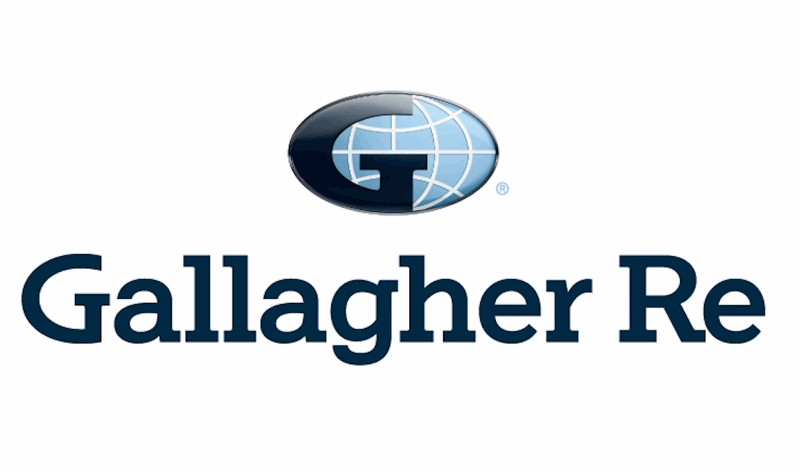‘Accelerated softening’ at April 1 renewals with more capacity and optionality, says Gallagher Re
- July 24, 2025
- Posted by: Luke Gallin
- Category: Insurance

Headline reinsurance rate changes in Japan at the April 1st renewals show “accelerate softening” when compared to the major international renewals at January 1st, with more capacity and optionality for buyers a clear trend, as traditional capital hit a new high of $655 billion, according to reinsurance broker Gallagher Re.
After an extended period of hardening following major typhoon activity in 2018, compounding rate increases on domestic Japanese catastrophe programmes lifted pricing to historical highs.
“However, the Japanese market has a long and respected code of conduct around the notion of payback. With such significant rate increases on domestic cat programs in recent years, payback has been expedited and therefore the April 2025 renewal represented something of a watershed,” explains Gallagher Re.
As a result, the major focus of this renewal was price reduction rather than coverage, which Gallagher Re says was greatly facilitated by a significant swing in the supply / demand balance in the favour of buyers.
Reduced overall reinsurance limit in the market and a strong drive for growth from sellers, led to an “accelerated softening in the rating environment” compared to what was seen at 1.1 2025. Despite the softening, Gallagher Re argues that rates in Japan remain at an elevated level when compared to pre 2018 / 2019 typhoon pricing.
According to Gallagher Re’s analysis, Japan risk-adjusted property catastrophe loss-free rates were down 10% to 15% at 1.4 2025, while property risk loss-free accounts saw rate movements of -2.5% to -7.5%.
“Whilst reinsurers recognized the underwriting improvements, increases in capacity were more moderate than for catastrophe business. However, in a reversal of the trend in recent years, there was a small uptick in reinsurer appetite coming from both new reinsurers offering shares and reinsurers that previously withdrew from the class now seeking to return,” commented Gallagher Re on Japan property per risk and pro rata business.
The reinsurance broker highlights the fact the California wildfires had very little bearing on the Japanese market, outside of some very specific instances where losses came through intra-group acceptances.
Within property and property catastrophe, outside of Japan, reinsurance rates declined for most regions at the April 1st renewals, including India, which saw catastrophe loss-free rate reductions of between 10% and 15%, and property risk loss-free reductions of 5% to 7%.
In the US the April renewal is a relatively light period, and Gallagher Re explains that reinsurers were focused on the impacts of the January wildfires in California, with buyers focused on differentiating approach to peril / geography outcomes from the event. The result saw catastrophe loss-free rates declined by 5% to 15% at April 1st, as property risk loss-free rates declined by 5% to 0%. However, catastrophe loss-hit rates were flat to up 15% and property risk loss-hit rates increased 5% to 20%.
Elsewhere, the Philippines saw property risk loss-free rate changes of -5% to -10%, which was the same for catastrophe loss-free programmes. In Korea, risk loss-free rates were down 10% to 20% and catastrophe loss-free pricing declined further to -15% to -30%. In Latin America and the Caribbean, property risk loss-free rates were flat to down 5% and catastrophe loss-free rates were flat to down 7.5%, although catastrophe loss-hit rates increased 10% to 20%.
“April 1 renewal activity saw more capacity and more optionality for buyers — specific to class of business, geography, performance, strategy, and scale,” said Tom Wakefield, CEO, Gallagher Re. “The excellent reinsurer results for 2023 and 2024 helped the global reinsurance industry grow traditional capital to an all-time high of USD655 billion, and many reinsurers are expecting another year of attractive underwriting results and double-digit ROEs- provided natural catastrophe losses remain within their 2025 budgets.”
“The strong reported results for 2024 include prior year adverse reserves charges, mostly for US casualty classes. This reflects a reassessment of initial forecast profitability for more recent years, driven by the impact of continued loss inflation. This drag on earnings highlights that the industry has generated superior aggregate returns despite addressing perceived reserve,” he added.
“Assuming no major unexpected events during the remainder of 2025 it is likely that the differentiated approach to risk adjusted rate reductions being taken by the global reinsurance market will not only continue but accelerate. Reinsurers will try to ensure that variations between accounts with profitable results and reasonable pricing margins, and loss-making accounts with perceived insufficient margins, are maintained. The challenge for reinsurers will be balancing the desire to deploy increasing capital levels in an attractive market with the pressure to support less differentiated, blanket rate reductions.
“Unless demand for reinsurance picks up in the next nine months, the existing pressure on reinsurers’ management to demonstrate to their shareholders that they can profitably deploy the capital they have built up over the last few years will further intensify. Faced with this pressure, (re)insurers have the choice of stepping up their returns through dividends and share buybacks or utilizing their balance strength to seek growth through M&A. Whilst there are signs that the pace of smaller bolt-on acquisitions by major (re)insurers is picking up, at least in non-(re)insurance activities, larger scale (re)insurance related M&A cannot be ruled out at this stage of the market cycle,” Wakefield said.
This website states: The content on this site is sourced from the internet. If there is any infringement, please contact us and we will handle it promptly.



